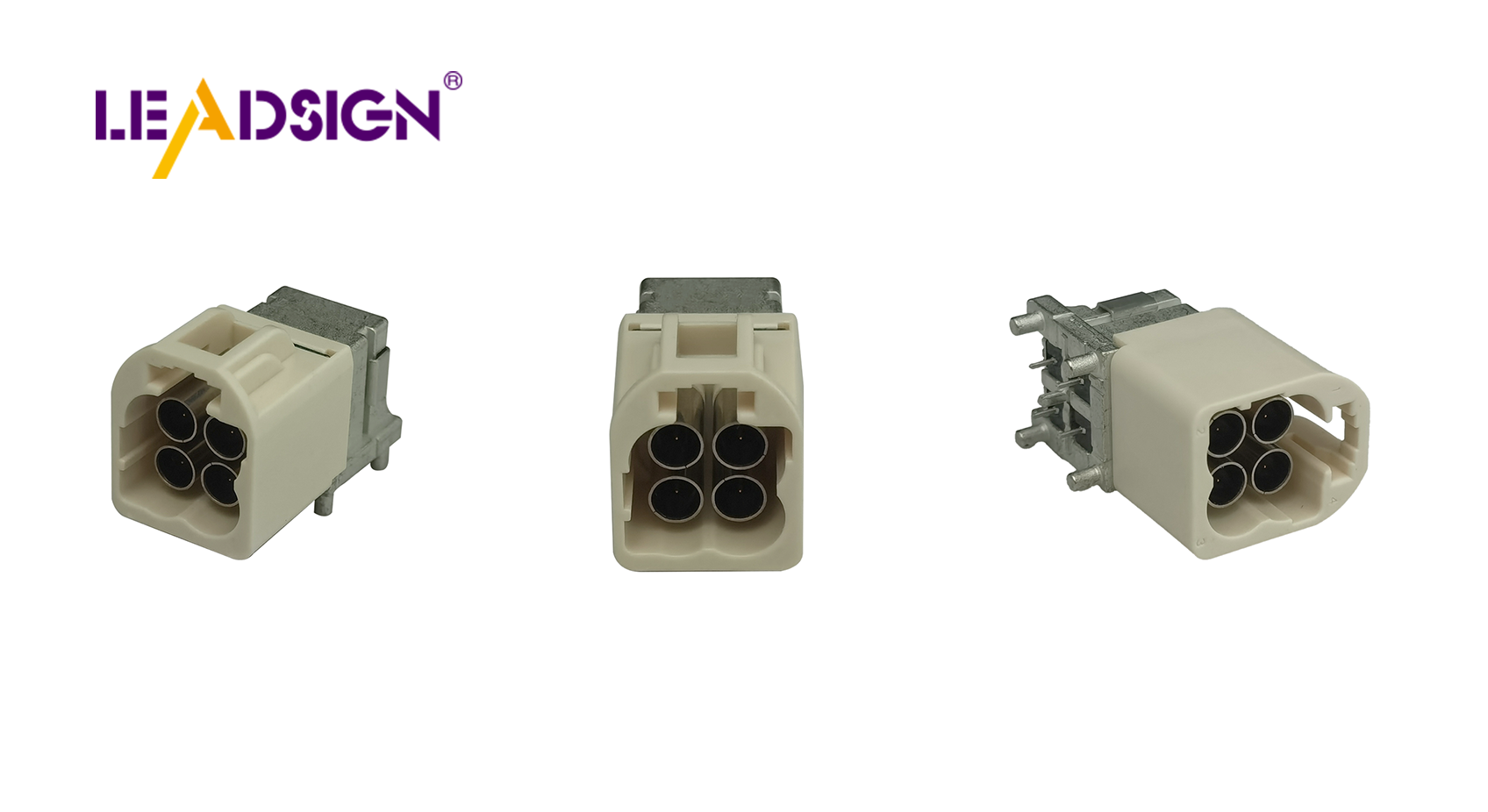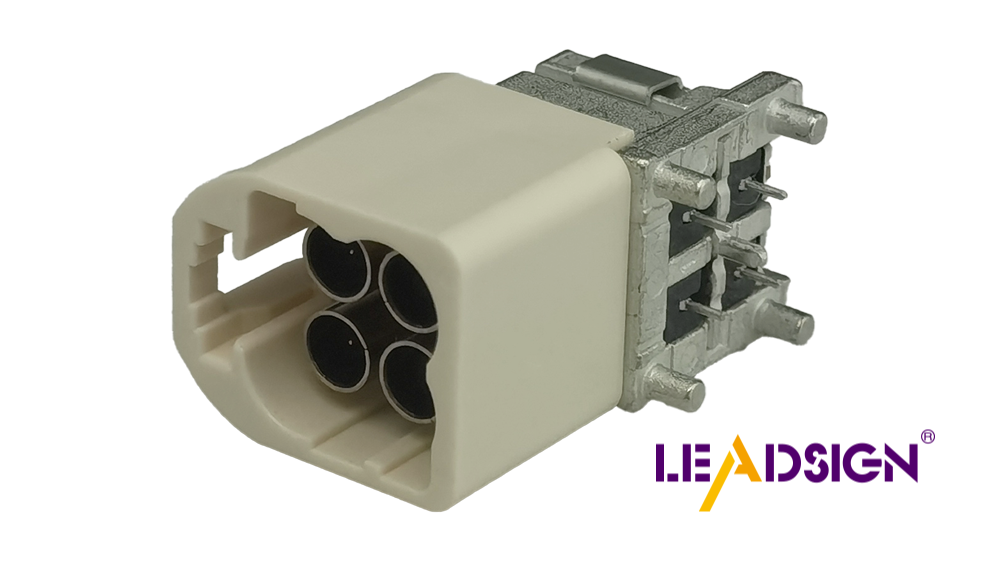Why Choose Different Auto Wire Connector Types Now?

Selecting the appropriate automotive electrical connectors types is crucial for optimal performance in vehicles. Different types of connectors play a significant role in the functionality of various vehicle systems. The reliability and failure modes of each connector type are influenced by factors such as heat and power transmission. The introduction of new connector technologies has revolutionized the automotive industry, enhancing efficiency, reducing failure occurrences, and seamlessly integrating with modern vehicles. Understanding these advancements empowers informed decision-making, ultimately promoting optimal vehicle performance and safety.
Understanding Automotive Electrical Connectors Types

Different automotive electrical connectors help cars work well. Each kind has special features and uses, so it's important to know how they work and how to put them in.
Crimp Connectors
Crimp connectors are popular because they are simple and work well.
Applications and Benefits
Versatility: Crimp connectors connect wires in lights, speakers, and engines.
Reliability: They stay connected even with shakes and tough conditions.
Cost-Effectiveness: These are cheap and easy to change, so many people use them.
Installation Process
Preparation: First, workers take off the wire cover to show the metal inside.
Crimping: They squeeze the connector onto the wire using a tool for a snug fit.
Inspection: After squeezing, they check if it’s connected well.
Deutsch Connectors
Deutsch connectors last long and work great in tough car places.
Applications and Benefits
Heavy-Duty Use: Good for places needing strong protection like engines or rough roads.
Secure Connections: They lock tight so they don’t come apart by accident.
Durability and Reliability
Weather Resistance: They keep working even when wet or dusty or hot.
Long Lifespan: Built strong to last long without needing new ones often.
FAKRA connectors are key for sending radio signals in new cars.
FAKRA connectors are key for sending radio signals in new cars.
Applications and Benefits
RF Signal Transmission: Used for radios and other signal devices in cars.
Color Coding: Colors help tell different types apart, making setup easy.
Compatibility with Automotive Systems
Frequency Range: They work from DC up to 6 GHz for many car systems.
Ease of Use: Easy to set up but need good crimping for a solid connection.
Knowing about these connectors helps pick the right one for each job in cars. Each type has its own perks that make car systems run better and more reliably.
Technical Details and Features
Impedance
Why It's Important
Impedance is key for connector performance. It helps signals move smoothly without bouncing back. This stops signal weakening. When a connector's impedance matches the system, it keeps signals strong. This matters in new cars where fast data is crucial.
How It's Measured
To measure impedance, check how much a connector blocks electric flow. Standards make sure connectors work well by meeting rules. These rules keep all car connectors working right together. By following them, makers ensure connectors work well in cars.
Frequency Range
Effect on Data Sending
A connector's frequency range shows what signals it can handle. In cars, wide-range connectors support many uses like music systems or smart driving aids. The range affects data sending without messing up signals, keeping car parts talking clearly.
Best Uses
Connectors with wide frequency ranges are good for fast data needs. FAKRA connectors are great for radios and maps in cars because they handle DC to 6 GHz signals well.
Data Speeds
Importance Today
Data speeds mean how fast info moves through a connector. In today's cars, quick fast data speeds help tech like self-driving and live maps work better. Fast-speed connectors make these systems run smoothly.
Old vs New Connectors
Old connectors can't always handle fast data speeds of modern cars. New ones like HFM systems do better with higher speeds and clear signals, making them fit for today's car tech needs.
Comparing Old and New Connectors
Old Connectors
Old automotive electrical connectors have been used in cars for a long time. They are simple and cheap, so people like them.
Size and Cost Factors
Size: Old connectors are big. They take up space in small cars.
Cost: They cost less at first, but their size can make them pricier later.
Performance Issues
Data Sending: Old connectors aren't good for fast data, needed in new cars.
Strength: They might not be strong enough for new tech like self-driving cars.
HFM Connector System
The HFM connector system is a big step forward for car connectors. It fixes old connector problems with better features for today's cars.
Better Size and Cost
Small Design: HFM connectors save 80% more space than old ones. This helps fit more parts in small spaces.
Cheaper to Make: Making these is cheaper because of smart building ways, saving money for makers.
Improved Features
Fast Data Speeds: HFM handles up to 20 GHz, sending data super fast at 28 Gbps, perfect for high-tech cars.
Smart Design: They're made light and small but still work great, meeting the need for tiny yet strong car parts.
How Connectors Help Modern Cars Work
Modern cars need different connectors to work well. These connectors help car systems run smoothly and be reliable.
Self-Driving Cars
Connectors Join Systems Together
In self-driving cars, connectors link parts like sensors and cameras. They make sure data moves between parts easily. This helps the car decide what to do quickly. For example, connectors join radar and LiDAR to the main computer for safe driving.
Keeping Safe and Reliable
Safety is very important in self-driving cars. Connectors must handle tough conditions like shaking and heat changes. Good connectors keep brakes and steering working all the time. They are tested a lot to make sure they stay strong and safe.
Entertainment Systems
Need for Good Connectors
Entertainment systems in cars need good connectors for a great experience. These systems use audio, video, and maps, needing fast data movement without problems.
Making User Experience Better
Connectors help entertainment systems work well by moving data fast. This lets music and videos play smoothly. They also support voice commands and touch screens, making them easy to use. In car seats, connectors help with seat movements for comfort.
Choosing the right automotive connector type has many perks. It helps cars work well, keeps them safe, and supports new tech. Many people have good stories about picking the right connectors. For example, Willie Beal found a great pigtail that let him drive again. Ryan Hodge liked a connector for his ABS sensor because it fit perfectly and worked well. These stories show why thinking about connector types is important. By choosing wisely, people can have cars that run smoothly and reliably.
See Also
Benefits of Fakra Auto Connectors for Vehicle Connectivity
Discovering Advantages of HFM Connectors in Auto Industry
Transforming Auto Connectivity with Fakra Connector Benefits

